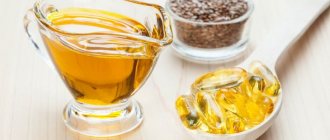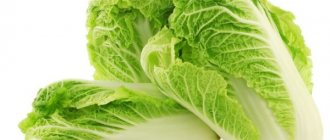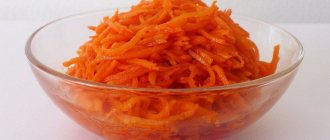Oil = fat. Over the past few years, the media, glossy magazines, the first nutritionists and fitness trainers of the country and Hollywood have persistently convinced us that fat is evil. And that you need to give up fat to lose weight. If it's hot, it's dry. If it’s a salad, then only with olive oil, and then a teaspoon. And if you dig deeper, it turns out that there are healthy fats that we need. And no other product contains as many of them as flaxseed oil. What kind of fats are these, why are they needed, and why is it impossible to live without them?
There are 3 types of fats:
- saturated;
- monounsaturated;
- polyunsaturated.
Saturated (aka complex) ones are the most dangerous, they also turn into nasty folds on the sides, stomach, etc. These are animal fats, butter, coconut, palm oil, and margarine. Saturated fats have a very complex structure, and therefore, their breakdown requires a lot of lipase, an enzyme that breaks down into glycerol and higher fatty acids. Not all people produce enough lipase, and lipase production decreases as we age.
Unsaturated fats have a simple structure, which means they require much less lipase to break them down. Polyunsaturated fats include:
- linseed oil;
- Sesame oil;
- corn oil;
- walnut oil;
- fish oil and other oils.
The cells of our body are built from unsaturated fatty acids, like bricks. But, unfortunately, the body itself does not produce them, but can only obtain them from food. We are talking about two fatty acids:
- Omega-6 (linoleic acid);
- Omega-3 (alpha-linolenic acid).
Now attention! If we can still get Omega-6 from any product in sufficient quantity, then Omega-3 fatty acids are negligible even in vegetable oils. And if you consider that almost all of them undergo heat treatment, then this amount decreases several times more.
And only flaxseed oil is a natural source of Omega-3 fatty acids, which account for 60%, 20% are Omega-6 and the remaining 10% are Omega-9 acids. All of them participate in metabolism, speed it up, remove cholesterol, and cleanse blood vessels. These are all fundamental principles of healthy weight loss.
In addition to acids, flaxseed oil contains vitamins A and E. These are antioxidants, without which rejuvenation of the body is impossible.
Kinds
Flaxseed oil is the leader in the number of therapeutic and prophylactic properties among vegetable oils. The energy value of the product is 844 calories per 100 milliliters. To maintain health, nutritionists recommend taking 15 milliliters on an empty stomach half an hour before meals, or at night 30 minutes after dinner.
To feel the results, it is important to consume flaxseed oil every day, for at least 2 months, without skipping doses. Otherwise you won't notice the changes.
Types of flax seed oil, classified by processing method:
- Unrefined. This is the most useful product, retains its original properties (smell, taste, color), quickly deteriorates and produces fuses during long-term storage. Unrefined oil is “freed” from mechanical impurities through centrifugation, filtration and sedimentation.
- Hydrated. It retains the beneficial properties of unrefined water; in addition, it does not produce sludge (fusa), since it is pre-treated with water to remove phosphatides that give sediment.
- Refined. It undergoes mechanical and chemical cleaning with alkali, which kills valuable free fatty acids. Refined flaxseed oil is shelf-stable, has no sediment, has a weak taste and odor, and is neutral in color. It is of no value to the human body.
- Refined bleached deodorized. In addition to treatment with alkali (refining), the oil is additionally subjected to deodorization and bleaching. The output is a discolored product. Bleaching is carried out with clay, followed by filtering the oil through activated carbon. Like the previous type, it is devoid of useful substances and is inferior in properties to unrefined and hydrated ones.
Flaxseed oil is obtained by crushing peeled flax seeds. Unrefined is produced by pressing, refined - by pressing and extraction. Interestingly, 2 milliliters of the product contains the body’s daily requirement for omega-3 fatty acids. In addition, it is a storehouse of tocopherols (E), vitamin K.
Refined oil has a greenish-yellow color, clean, transparent, without sediment, with a mild taste and smell. Unrefined is divided into 2 grades, in which the permissible content of volatile substances and moisture should not exceed 0.3%. The taste and smell of unrefined flaxseed oil is pure, without bitterness. The permissible sludge by weight for the first grade is up to 0.05%, for the second - 0.1%.
Avoid surrogate drugs and counterfeits, they can worsen your health [1].
Chemical composition
Content of fatty acids in flaxseed oil:
- α-linolenic acid (considered a precursor to omega-3) – 53.4 grams (45 – 70%);
- linoleic (omega-6) – 14.3 grams (12 – 24%);
- oleic (omega-9) – 20.198 grams (10 – 21%);
- palmitoleic (omega-7) – 0.10 grams (0.05 – 0.1%);
- palmitic – 5.10 – 5.30 grams (4.1 – 4.4%);
- stearic – 3.40 – 4.10 grams (3.3 – 3.8%);
- margarine – 0.10 grams (0.05 – 0.1%);
- behenic acid – 0.10 grams (0.05 – 0.1%);
- arachine – 0.10 grams (0.05 – 0.1%);
- lignoceric – 0.10 grams (0.05 – 0.1%).
The mass fraction of saturated fatty acids in 100 grams of product reaches 6 – 18%.
Interestingly, flax seed extract is superior in omega-3 acid content to soybean oil and fish oil.
In addition, it is a valuable source of phytosterols, which are dominated by beta-sitosterol (515% of the daily value is concentrated in 100 milliliters), campesterol (184.5%), stigmasterol (92.9%), delta-5-avenasterol (107 .3%).
Thus, flaxseed oil is classified as a feminine product.
It does not contain oxalic acid, carbohydrates and purine bases. It contains lignans - substances that reduce the level of “bad cholesterol” and normalize the functioning of the cardiac system. These compounds exhibit antimitotic, estrogen-like, and antioxidant activity. Table No. 1 “Nutritional value of flaxseed oil”
| Components | Content per 100 grams of product, milligrams |
| Phytosterols | 689,0 |
| Beta-sitosterol | 206,0 |
| Campesterol | 98,0 –105,0 |
| Unsaturated fatty acids | 87,898 |
| Delta-5-avenasterol | 59,0 |
| Stigmasterol | 30,0 – 35,0 |
| Saturated fatty acids | 9,9 |
| Gramisterol | 6,7 |
| Water | 0,1 |
| Squirrels | 0,1 |
Table No. 2 “Chemical composition of linseed oil”
| Name | Nutrient content per 100 grams of product, milligrams |
| Vitamins | |
| Gamma tocopherol | 28,8 – 52,0 |
| Delta tocopherol | 0,95 – 1,6 |
| Alpha tocopherol | 0,5 – 1,2 |
| Beta tocopherol | 0,6 |
| Choline (B4) | 0,2 |
| Phylloquinone (K) | 0,0093 |
| Macronutrients | |
| Phosphorus | 1,5 |
| Calcium | 1,0 |
Canadian nutritionist Robert Kundi believes that this product is prescribed to make a revolution in the history of mankind for preserving youth in the future [2].
Beneficial features
Among the beneficial properties of the product are:
- Lowers cholesterol levels, normalizes blood pressure, protects against heart diseases (angina pectoris, hypertension, prevents recurrent heart attacks), reduces blood viscosity. Makes blood vessels more elastic, improves metabolism.
- Relieves inflammation in fibrocystic mastopathy, gout, lupus. Taking flaxseed oil eliminates swelling of the joints and relieves sudden severe pain in them. In addition, omega-3 fatty acids increase the absorption of iodine.
- Relieves constipation, hemorrhoids, diverticular disease. Crushed flax seed is rich in fiber, helps cleanse gastric sacs, prevents the development of possible infections, relieves inflammation, and normalizes the functioning of the digestive tract. The oil has antiparasitic properties, removes colitis, gastritis, and heals the liver. The product prevents the formation of kidney stones and the appearance of cholelithiasis.
- Improves the condition of the skin, is used to treat psoriasis, sunburn, acne, eczema. Essential fatty acids (EFA), which are part of flaxseed oil, eliminate red itchy spots and soothe irritated dermis. In addition, EFAs reduce the secretion of sebaceous glands, the abundance of which clogs pores and causes acne.
- Supports healthy hair and nails. A lack of unsaturated fatty acids causes scalp problems: dandruff, psoriasis, eczema. Omega-3 strengthens fragile nails, prevents their splitting, relieves hair from dryness, dullness, and prevents split ends.
- Improves the transmission of nerve impulses, eliminates tingling and numbness in the limbs, increases the effectiveness of treatment of Parkinson's disease. EFAs prevent nerve damage in multiple sclerosis and diabetes.
- Relieves symptoms of menopause, endometriosis, menstrual pain. Flaxseed oil contains lignins, which normalize hormonal balance. In addition, EFA improves uterine function, helps eliminate infertility problems, and prevents the formation of prostaglandins, which cause bleeding during menstruation.
- Slows down the aging process, reduces the risk of cancer (prostate, colon, breast).
- Resists the occurrence of atherosclerosis, hypertension, stroke, blood clots.
- Fights male infertility, impotence and prostate diseases (prevents inflammation and swelling).
- Stimulates metabolism, improves weight loss, reduces appetite.
- Accelerates the recovery of muscle tissue after intense sports and ligaments after sprains.
- Facilitates the course of pregnancy, has a positive effect on the formation of the brain of the unborn child.
- Increases the effectiveness of treatment of diseases of the nervous system, lungs and bronchi, thyroid gland, kidneys, bladder.
Flaxseed oil is widely used in cosmetology. On its basis, nutritional compositions for hair are prepared that have fortified, bactericidal, rejuvenating, and softening properties.
To prevent stretch marks, it is recommended that flaxseed oil be rubbed into the skin of women, especially during pregnancy, when the dermis is stretched due to the growth of the fetus. When applied regularly (massage movements), it moisturizes, nourishes, and gives a radiant appearance to the body. During feeding, it is applied to the nipples and breasts to protect against the appearance of small cracks and loss of skin elasticity. To speed up the healing of stretch marks and increase the effectiveness of anti-cellulite massage, flaxseed oil is added to the cream [3][4].
Hazardous properties
If consumed uncontrolled, even the healthiest product can be harmful to human health. Flax seed oil quickly oxidizes (when heated and interacts with air) and deteriorates from exposure to sunlight. Because of this, it is not recommended to heat treat it and store it open for a long time. Otherwise, free radicals harmful to the body are formed in the oil.
Thus, the main disadvantage of the product is its short shelf life.
Possible adverse reactions of the body when doses are exceeded:
- Deterioration of blood clotting.
- Diarrhea, but no flatulence is observed.
- Allergic reactions: breathing problems, rash, swelling.
Contraindications to the use of flaxseed oil:
- taking painkillers and antidiabetic drugs;
- pregnancy and hormonal imbalance;
- taking medications whose action is aimed at lowering cholesterol and thinning the blood;
- cholecystitis;
- polyps of the appendages and uterus;
- hepatitis;
- lactation;
- chronic pancreatitis;
- hypertension;
- increased blood clotting;
- fatty liver, disorder of cellular structure;
- taking hormonal contraceptives, antidepressants;
- diseases of the biliary tract;
- atherosclerosis.
Unripe flax pods cause poisoning of the body, and raw seeds contain cyanide (in small doses). The substance has a negative impact on human health. In small doses, it causes a burning sensation in the mouth, agitation, anxiety, increased blood pressure, shortness of breath, dizziness, and profuse sweating. High doses of cyanide are dangerous due to instant loss of consciousness and death [5][6].
Application
Valuable and healthy flaxseed oil is successfully used in areas such as the food, pharmaceutical and cosmetic industries. For culinary purposes, it is used as a dressing for vegetable salads, as well as all kinds of side dishes.
Market Analytics
- Global cosmetics market 2021: an unprecedented test for the global cosmetics industry
- Top 10 Cosmetic Research and Development of 2021
- 2020 in the beauty industry – innovation without borders
Convenient search for beauty salons on our website
Beauty salons in Moscow Beauty salons in St. Petersburg Beauty salons in Ekaterinburg Beauty salons in Novosibirsk
Latest blog posts on our website
- Naturecream / Properties of the “Sunny” oil itself
- Naturecream / “Sugar” wrinkles - or what glycation can do
- Naturecream / Esterified oils
- Naturecream / Arnica - the magical plant of alchemists
- Naturecream / Tremella Extract - Snow Mushroom Detox for Skin
- Prostye-sovety / How to visually enlarge your lips with makeup
- Naturecream / Apricot kernel oil for face
- Naturecream / MATRIXYL3000 - the best skin elasticity stimulator
- Naturecream / SPF in Natural Oils
- Naturecream / Geranium (Pelargonium) oil for skin health and beauty
Latest forum topics on our website
- Natalya / How to properly make a gelatin mask?
- Mrs._Smith / Badly sunburned! What to do?((
- Ice / Is it necessary to combine fitness classes with a diet?
- Antonova / What can be used for hair loss?
- Radio operatorKat / Who was on a protein diet?
Other articles in this section
| Low-calorie margarine Margarine is a product made from animal fats and vegetable oils with the addition of various components. It is an emulsion of water in oil. France is considered the birthplace of margarine; it was invented as a cheap substitute for butter. |
| Shea butter (karite) Shea butter has been known to mankind for centuries. Its country of origin is Africa. It is on the African continent that the shea tree (also called karite) grows, whose lifespan is about 300 years. The fruits of the tree resemble an avocado in shape and have aromatic pulp. |
| Vegetable-fat spread Spread (English – spread) - literally translated from English means “smearing”. The spread got its name from its ability to spread easily even when severely frozen. In English, a spread is any paste-like product that can be easily spread. In Europe and America, the spread has been one of the favorite products for quite a long time, relegating butter to the background. In Russia, the spread gained popularity in 2003, when its widespread production began. |
| Rapeseed-soybean oil Rapeseed-soybean oil is obtained by mixing two separate types of oils: rapeseed and soybean. But before mixing them, each of the oils is purified, although at the same time preserving their taste and beneficial properties. Purification is necessary so that the resulting oil does not contain impurities, cloudy sediments, etc. Also, canola oil itself needs to remove erucic acid (a toxic substance deposited in body tissues) so that it can then be used with soybean oil for food purposes. |
| Pine nut oil Pine nut oil is a truly unique, environmentally friendly natural product, which is obtained by cold pressing the grains (kernels) of pine nuts, which contain a large amount of useful substances. It is worth noting that there are no analogues of cedar oil in nature; moreover, artificial synthesis of this product is impossible. |
| Rendered beef fat Animal fats are an irreplaceable product in cooking. They are taken from bone tissue, internal organs, and fatty parts. The prepared dishes are not only tasty and aromatic, but also healthy for the human life cycle. |
| Peasant salted butter Salted peasant butter is made from fermented unpasteurized cream of the highest quality with the addition of a small amount of table salt, and is enriched with microelements. The fat composition must be more than 71.5 percent, and the moisture content must be at least 25%. |
| Macadamia oil Macadamia oil is a unique product of plant origin, which is obtained from ripe macadamia nuts growing in Australia using the cold-press method, due to which all the beneficial substances are retained in the product. This type of plant was first described by the German botanist Muller, who worked in Australia for a long time. At the moment, there are only nine species of macadamia, five of which grow only on the Australian continent, the remaining species can be found in Brazil, California, and South America. |
| Avocado oil Avocado is an exotic fruit with a rich vitamin and mineral composition. Avocado oil is obtained by cold pressing the pulp of the fruit. The resulting product has an emerald color that changes to brown when exposed to sunlight. The oil has a barely noticeable odor. |
| Hemp oil Hemp is a common plant that has been growing on the territory of modern Russia since ancient times. And if previously it was used to produce oils, now hemp oil is not produced, but is imported from England, Canada, the Czech Republic and other countries where industrial hemp is cultivated. A possible reason is a number of restrictions on the cultivation of this plant in Russia due to its potential use for the manufacture of prohibited products. |
How to use?
Flaxseed oil is recommended to be consumed with food without heat treatment. It goes well with fermented milk drinks, juices, cottage cheese, and vegetables. The oil is stored in an opaque glass container, tightly sealed, in the refrigerator. After opening the container, the product is consumed within 5–7 days, otherwise pathogenic microorganisms begin to actively multiply in it.
For an adult, the safe daily dose is 30 milliliters.
Flaxseed oil for weight loss
This is an ideal remedy for correcting body weight, since it contains omega-3,6,9 fatty acids, which take an active part in metabolism, promoting the burning of subcutaneous fat.
For weight loss, flaxseed oil is consumed according to the following scheme: 5 milliliters on an empty stomach 20 minutes before breakfast and in the evening 20 minutes after dinner. In this case, the dose should be gradually increased and increased to 15 milliliters at a time. People with bowel problems should drink 200 milliliters of warm water after taking the oil. If desired, the product can not be consumed in its pure form if it causes concerns and side effects on the body. It can be added to vegetable salads, mixed with honey, fruit syrups, juices, and other oils.
The main condition is not to heat the product, as this destroys its beneficial properties.
If you decide to lose weight with flaxseed oil, you should not expect quick results. The “medicine” will not have any effect in one dose. To achieve a noticeable effect (minus 2 - 5 kilograms), flaxseed oil must be drunk regularly, without skipping doses, for at least 2.5 - 3 months. In addition, without giving up unhealthy foods and systematic physical activity, you won’t be able to lose extra pounds.
The following are excluded from the diet of a person losing weight: fatty, fried foods, red meat (pork, beef), mayonnaise, sauce, wheat flour, baked goods, confectionery, marinades, sugar, processed foods, sweet carbonated drinks, alcohol. Forbidden foods are replaced with vegetables, poultry, fish, fruits, and natural freshly squeezed juices.
Among physical exercises, cycling, running, cardio, fitness, swimming, yoga, and aerobics are welcome.
After a weight loss course, do not refuse to use flaxseed oil. In the absence of contraindications to use, it is added to the daily diet as a source of polyunsaturated fatty acids [7].
Flaxseed oil in the diet: important tips
At what age can children be given flaxseed oil?
Flaxseed oil can be introduced into a child’s diet only from 2-3 years of age. It is important to start with a micro dose and strictly control the amount. The product in capsules can be given to children from 5 years of age.
Flaxseed oil is suitable for combating childhood constipation, but before you start using it, you should consult your pediatrician.
Recommended daily dose of flaxseed oil for children:
- Up to 3 years – no more than 9 g
- From 3 to 8 years – no more than 13 g
- At the age of 8-10 years – no more than 15 g
Flaxseed oil in the diet of pregnant women
Although flax oil contains many beneficial substances, pregnant women should use it carefully. The maximum dose of flaxseed oil for pregnant women is 2 tablespoons per day. However, in the last trimester, its use in food is contraindicated, since flax oil can provoke premature birth! Before you start using it, be sure to consult your doctor!
Can flaxseed oil be consumed by breastfeeding women?
Nutritionists disagree on the use of flax during lactation. Some believe that the phytoestrogens contained in the oil can be dangerous for babies. Others, on the contrary, are convinced that food products of plant origin cannot in any way affect human hormonal levels.
Be that as it may, a number of experiments have shown that plant hormones can lead to disruption of the development of the fetus and newborn baby. In addition, when plant hormones enter the mother’s body, the effectiveness of natural postpartum contraception decreases. And after a cesarean section, flax oil can increase bleeding. That is why we want to emphasize once again: before you decide to use flaxseed oil during pregnancy and after childbirth, consult in detail with your personal doctor in order to avoid irreparable consequences of using such a useful product at first glance. It may be better to introduce another source of healthy fatty acids into your diet.
At the same time, for non-pregnant women, flaxseed oil is very useful: it helps regulate the menstrual cycle, stabilizes the ratio of estrogen and progesterone, and reduces problems associated with menopause, such as sleep disturbances and headaches, anxiety and mood swings.
Is it good to use flaxseed oil for diabetes?
Type 1 diabetics are recommended to use flax oil as a salad dressing - adding unsaturated fatty acids to the diet reduces blood sugar levels and activates the process of insulin production. But using oil in its pure form is undesirable.
The second type of diabetes greatly weakens the body. In this case, the oil will help to establish the proper functioning of the organs. For a better effect, flaxseed oil is supplemented with olive oil, but this should be done only after consultation with your doctor. It is also important to consider the contraindications listed above.
Flaxseed oil for face
Every housewife knows that this product is an effective means of getting rid of skin defects: wrinkles, acne, peeling, age spots.
How does flaxseed oil affect the dermis:
- activates collagen production, renews skin cells, promotes tissue restoration;
- tightens the oval of the face;
- moisturizes and improves the smoothness of the dermis;
- relieves inflammation and irritation;
- fights acne;
- protects cells and tissues from the adverse effects of environmental factors;
- improves complexion;
- improves overall skin tone;
- accelerates the treatment of bruises, burns, warts, psoriasis, shingles;
- eliminates dryness, flaking;
- fights shallow wrinkles;
- heals wounds, bruises, cuts and cracks.
When used externally, flaxseed oil nourishes, moisturizes, softens and rejuvenates the skin, so the product is indicated for the care of wrinkled, flabby, dry, aging dermis. When used internally, it stops inflammation in cells, normalizes metabolism, and saturates them with nutrients.
Indications for use:
- pimples, acne;
- first age-related changes on the skin;
- prevention of wrinkles;
- lightening of freckles, dark spots;
- dryness, peeling and feeling of tightness of the dermis.
Directions for use:
- Ingestion. Skin is an indicator of human health. If problems arise with the dermis, you should look for the cause in the body. What do pimples on the face mean? Rashes on the nose indicate the presence of hidden problems with the pancreas, on the bridge of the nose - with the liver, cheeks - with the stomach, temples - with the gallbladder, forehead - with the small intestine or bladder, chin - with the pelvic organs, above the lips - with the heart .
To improve the condition of the skin, the source of inflammation is eliminated and, if necessary, drug treatment is carried out. To enhance the effect, if there are no direct contraindications, flaxseed oil is introduced into the patient’s diet. Daily dose – 30 milliliters, divided into 3 meals. Flaxseed oil is added to salads and warm ready-made porridges. This method of application improves food digestion and prevents the appearance of wrinkles.
- Masks. They have a nourishing, rejuvenating effect on the skin, relieve dryness and flaking. To avoid aggravating the situation, flaxseed oil should be used with caution to care for oily dermis. In order not to increase the work of the sebaceous glands, choose recipes that contain protein or citrus fruits.
- Rubbing the skin. To improve the tone of the face and make the dermis silky, apply flaxseed oil to cleansed skin with massage movements, at least 1 hour before bedtime. Otherwise, the product will not have time to be absorbed, and swelling will appear in the morning.
- Spot use. Used to eliminate microcracks and acne. In this case, the tampon is soaked in linseed oil, which is used to treat problem areas on the skin (warts, bruises, irritations).
- Warm compress. Nourishes and improves the condition of dry, sensitive skin. Directions for use: soak a soft cloth in oil, apply to face, wait 10 minutes.
Face mask recipes:
- For oily skin. Cleanses various impurities, dries out acne, tightens pores. Preparation principle: dilute 15 grams of fresh baker's yeast in the same amount of milk. Stir the mixture to a paste. Let the mask stand for a quarter of an hour, then add 5 milliliters of lemon juice and flax oil. Apply the prepared mixture to your face for 30 minutes, then rinse with warm water.
- For normal skin. Nourishes and softens the dermis. Flaxseed oil is recommended to be used as a replacement for night cream. Apply at night with light patting movements, after removing makeup, do not rinse.
To moisturize and soften the skin, add 3 drops of jasmine essential oil to flaxseed oil, and lemon or orange to relieve fatigue and improve complexion.
- For dry and aging skin. Tightens the dermis, deeply nourishes and moisturizes. Preparation principle: peel ¼ avocado, puree, add 5 milliliters of honey and flaxseed oil to the resulting mass. Mix the contents, apply to the face, wait 30 minutes. After the specified time has passed, rinse off the mask with warm water.
- Cleansing mask. Ingredients: lemon juice (10 milliliters), kefir (15 milliliters), flaxseed oil (5 milliliters), flour (5 grams). Mix the ingredients thoroughly, distribute evenly over the face, leave for 15 minutes, rinse.
A scrub and lotion for acne are prepared using linseed oil. These products cleanse the dermis of impurities and sebaceous secretions, relieve inflammation, and have a tonic and moisturizing effect. To prepare the peeling, flax oil is mixed with oatmeal in equal proportions. The scrub mask is applied with light massage movements onto cleansed skin, gently rubbed in, and rinsed off with warm water. It is recommended to use 1 – 2 times a day.
To prepare an acne cleansing lotion, mix flaxseed oil, yolk, cream, lemon juice, camphor alcohol and honey. Shake the finished lotion vigorously, pour into a glass container, and store sealed. It is recommended to wipe previously cleansed facial skin with the resulting product every day [7].
Application in cosmetology
In the pharmacy you can see a lot of exotic oils: shea, jojoba, cumin and many others. After reading reviews, we rush to buy expensive jars, forgetting that there is an original Russian oil, which leads among all others in its beneficial properties. Of course, we are talking about flaxseed oil.
The benefits and harms of the product taken internally have already been discussed above, but in cosmetology this is far from the last fiddle. It has the ability to significantly improve the condition of skin and hair, serves as an excellent basis for masks, but it can also be used as an independent product. To make your hair shiny and silky, you can apply linseed oil to it (at the roots and along the entire length) for 40-60 minutes, once or twice a week.
If you have dry skin on your face and hands, you can apply a thin layer of oil to your skin every evening to get rid of flaking. The only negative is the specific smell, which you can put up with.
Flaxseed oil for hair
This is a natural healing remedy that improves the condition of lifeless, damaged and dry strands, increases their smoothness and shine, and strengthens the structure. Cold-pressed flaxseed oil is a source of vitamin F (unsaturated fatty acids). The nutrient is responsible for the proper formation, growth and health of hair follicles. In addition, it protects the scalp from dryness, fights split ends, dandruff, nourishes and strengthens the roots, which suffer from temperature changes and lack of vitamins. Therefore, vitamin F is rightfully considered the vitamin of beauty.
Flaxseed oil prevents hair loss, restores its damaged structure, adds shine, softness and elasticity, and restores strength.
Masks to maintain healthy hair:
- For oily hair. Normalizes sebum production, eliminates dandruff, cleans hair and pores of impurities. To prepare the mask, mix the following ingredients: kefir with a fat content of 1% (200 milliliters), linseed oil (30 milliliters). The resulting mixture is rubbed into the scalp, distributed over the entire length of the hair, wrapped in a plastic bag on top, waited for 40 minutes, and washed off with warm water. With regular use (2 – 4 times a week), the hair takes on a fresh, neat appearance and is less likely to become greasy.
- For dry hair. In this case, linseed oil is used without adding additional ingredients. A nourishing mask is applied to the scalp with massage movements, rubbing the product in for 10 minutes, then distributed along the length of the hair. The top of the hair is covered with polyethylene and insulated with a towel. Keep the product on your head for 1 – 2 hours, depending on the degree of hair damage. In severe cases, apply the mask overnight, then wash off with warm water.
- For hair growth. Stimulates metabolic processes in the root zone. To prepare the mask, flaxseed, castor, and sea buckthorn oils are diluted in equal quantities (15 milliliters each). Add rosemary essential oil (5 drops) to the resulting mixture. The mask is applied to the head and hair, covered with cellophane, and wrapped in a scarf. After an hour, the product is washed off with warm water.
To treat brittle, split ends, flaxseed oil is mixed with castor oil and applied to damaged areas of hair. To enhance the effect, hold the strands over steam while applying the product. This helps open pores and better nourish brittle ends.
To “feed”, strengthen the hair structure and give it a natural shine, flaxseed oil (50 milliliters) is mixed with glycerin (30 milliliters), essential compositions (lavender oil for normal, dry hair type, grapefruit or eucalyptus oil for oily hair). The procedure is done at night. The course of therapy is 1 month [7].
Flaxseed oil: benefits and harm. Tips for use
First you need to choose the right product. It should only be cold-pressed oil made using old technology. But that is not all. Pay attention to the bottles in which it is packaged. Flaxseed oil oxidizes quickly, so containers made of transparent glass or plastic are not suitable for it; the container should be darkened. Otherwise, instead of vitamins and healthy fatty acids, you can get substances that can only cause harm.
Now let's pay attention to the timing. Storing flaxseed oil unopened is only possible for 12 months. Once opened, it should be kept in the refrigerator and consumed within a month.
Another important point is related to cooking, which involves heating to high temperatures. The harm and benefits of flaxseed oil are closely related to this. Drinking a spoonful of cold oil on an empty stomach will give the body a large amount of useful substances. When heated above 60 degrees, all components turn into complete carcinogens and can cause serious harm.
And the last thing is the amount of oil consumed. We are used to dressing salads and porridge “by eye”, often pouring too much. Daily oil consumption should not exceed 2 tablespoons, so it is better if you dose this product. Be aware of its high calorie content.










